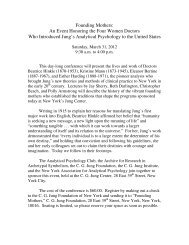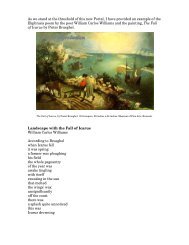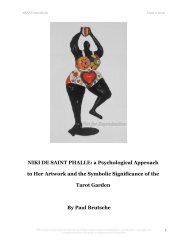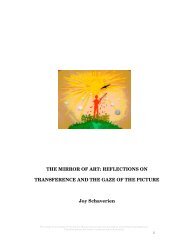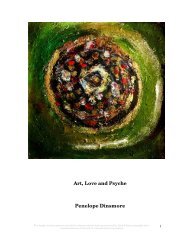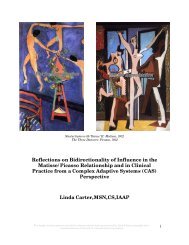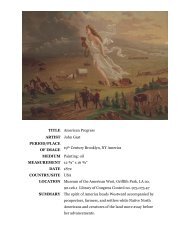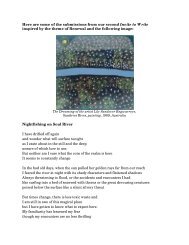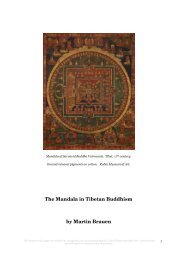Pictorial Space throughout Art History: Cézanne and ... - ARAS
Pictorial Space throughout Art History: Cézanne and ... - ARAS
Pictorial Space throughout Art History: Cézanne and ... - ARAS
You also want an ePaper? Increase the reach of your titles
YUMPU automatically turns print PDFs into web optimized ePapers that Google loves.
<strong>ARAS</strong> Connections Issue 2, 2012<br />
The composition is dynamic because a pair of diagonal movements<br />
(forces) contain each other but are not symmetrical (figs 5-6): within that basic<br />
structure there are smaller thrusts <strong>and</strong> counter-thrusts.<br />
Because of its location, each plane pushes or pulls against the flat surface<br />
of the canvas (fig. 4). The pull of one plane is contained by the opposite pull of the<br />
other in such a way that, while the two planes are located at different depths, they<br />
are both held in relationship to the surface: the integrity of the surface is not<br />
violated (see also figures 5-6). Hans Hofmann said:<br />
The product of movement <strong>and</strong> countermovement is tension. When tension<br />
(working strength) is expressed, it endows the work of art with the living effect of<br />
coordinated, though opposing, forces |26|.<br />
There is also a circular movement back into depth over several planes <strong>and</strong><br />
then forward again over several planes (fig. 11). This circular movement, like the<br />
balance of forces, holds the planes in relationship to the flat surface <strong>and</strong> so keeps<br />
the painting unified.<br />
Between the planes is pictorial space which is different from the illusion of<br />
space suggested by perspective. Figure 10 shows that perspective makes the<br />
rectangle seem like a window into a three-dimensional world ( it violates the flat<br />
surface). Hofmann said:<br />
Painting possesses fundamental laws. These laws are dictated by<br />
fundamental perceptions. One of these perceptions is: the essence of the<br />
picture is the picture plane. The essence of the picture plane is its two-<br />
dimensionality ... And this leads to the second law: the picture must<br />
achieve a three-dimensional effect, distinct from illusion, by means of the<br />
creative process. These two laws apply both to color <strong>and</strong> form |27|.<br />
The images in this paper are strictly for educational use <strong>and</strong> are protected by United States copyright laws. 20<br />
Unauthorized use will result in criminal <strong>and</strong> civil penalties.



